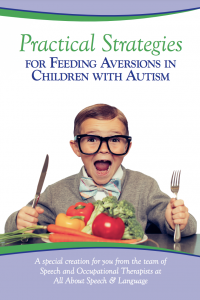Appropriate and Appealing Nutrition Choices
Menu
Persons with Disabilities Should Be Provided Individualized and Culturally Appropriate and Appealing Nutritional Choices
6.1 The Impact of Sensory Processing:
- An individual that is over/under-stimulated prior to or during mealtime is going to have difficulty attending to the food.
- An individual with sensory processing difficulties may have difficulty modulating the sensations associated with mealtimes (noises, smells, lighting) resulting in difficult mealtime behaviors.
- Individuals with sensory processing difficulties may have heightened sensory sensitivities. They may be able to detect the slightest change in color, texture, or flavor.

6.2 Food Textures and Taste:
- Prepare foods in different ways based on the individual’s sensory preferences (vegetables can be raw and crunchy or cooked and soft. Foods mixed or served separately).
6.3 Suggestions for introducing new foods into diet:
- The Academy of Nutrition and Dietetics, the world’s largest organization of food and nutrition professionals, provides evidence-based tips on how to manage picky eaters:
- To maximize success when introducing new foods, ensure that the individual is hungry.
- Offer new foods at snack time rather than mealtime to help reduce the stress associated with this experience.
- Serve in bright festive tableware.
- Offer foods on different plates, using different utensils and/or from different containers.
- Remove food from packaging prior to presentation whenever possible.
- Praise and reward even the smallest bite or interest in a portion of new food.
- Use age-appropriate non-food motivators and reinforcers for positive behaviors.
- Eat regularly and carefully in appropriate environments and, whenever possible, with others.
- For visual learners – or if verbal communication is limited- use visual cues for labeling household cabinets, instructions for using appliances, recipes, shopping lists, etc. so that independence and choice can be exercised.
- If you notice frustration building up during meal and snack time, find a way to teach emotional expression.
- Praise and reinforce all positive behavior.
- “Kids view certain foods that are used as rewards to be better or more valuable than other foods. As a result, they learn to prefer unhealthy foods that are given to them as rewards (e.g., candy, cookies, and soft drinks) over healthy foods (e.g., vegetables, fruits, milk, and dairy products). Rewarding or punishing kids with food can lead to eating disorders. Withholding food for punishment may stimulate kids to overeat when food is available because they are afraid they won’t have enough to eat later. Kids naturally enjoy eating healthy and being physically active. Parents, schools, and communities should provide kids with an environment that supports healthy behaviors and teaches them lifelong healthy eating habits.” –Clemson Cooperative Extension
University of Southern Florida Center for Autism and Related Disabilities Report:
Practical Strategies for Feeding Aversions in Children with Autism Report
6.4 Examples of Non-Food Motivators:
Instead of using food as a reward, try some of the below non-food motivators
- At Home:
- Respect and words of appreciation can go a long way. Saying “You did a great job” or “I appreciate your help” is often underestimated.
- Allow your child to have a few friends over after school to play sports or watch a video.
- Invite a few of their friends to a sleepover.
- Let the child help plan a special outing.
- Read a bedtime story of your child’s choice.
- Have a family game night and let the child choose the game(s).
- Allow the child to pick a movie that the family will watch together or an outdoor sport that the family will play together.
- At School:
- Sit by friends.
- Watch a video.
- Read outdoors.
- Teach the class.
- Earn extra credit.
- Get extra art time.
- Have an extra recess.
- Receive verbal praise.
- Enjoy class outdoors.
6.5 Culturally Appropriate Meal Choices:
- Culturally appropriate foods/meals should be acknowledged and prepared to be offered as a choice. Ingredient(s) accessibility should be considered and accounted for.
- Sharing meals with others: Sharing frequent meals with family members is associated with positive outcomes in social skills (Benefits of Family Meals for Children With Special Therapeutic and Behavioral Needs, 2016).
- Eat regularly and carefully in appropriate environments and, whenever possible, in company.
- Global Foods for a Healthy Plate

